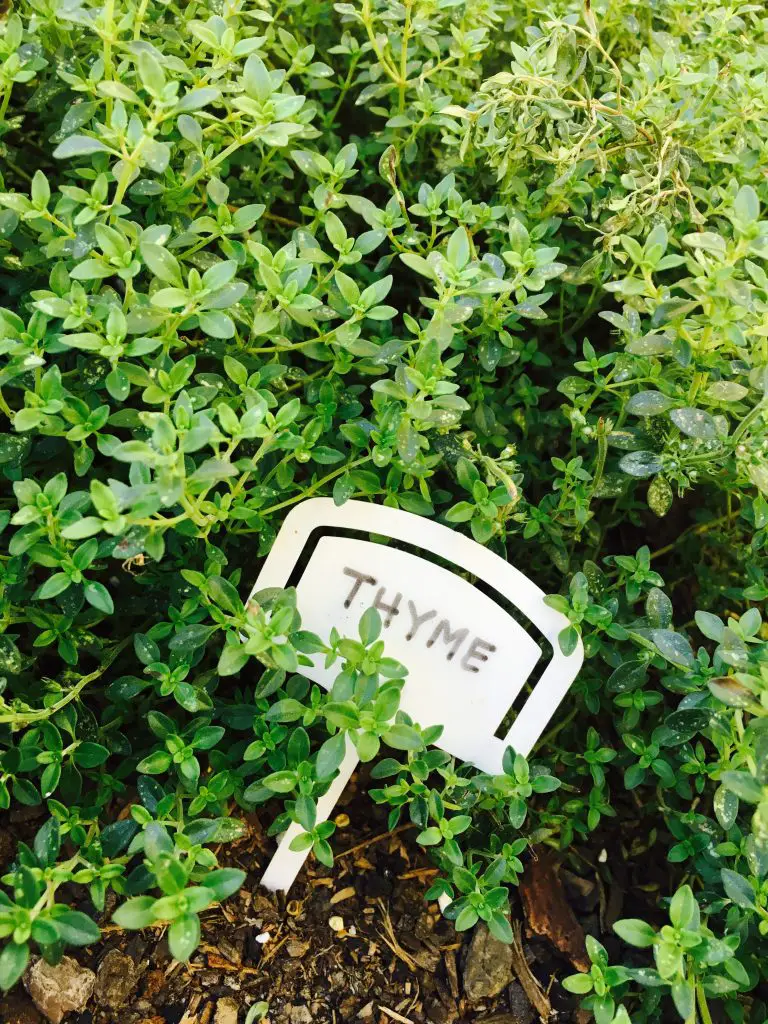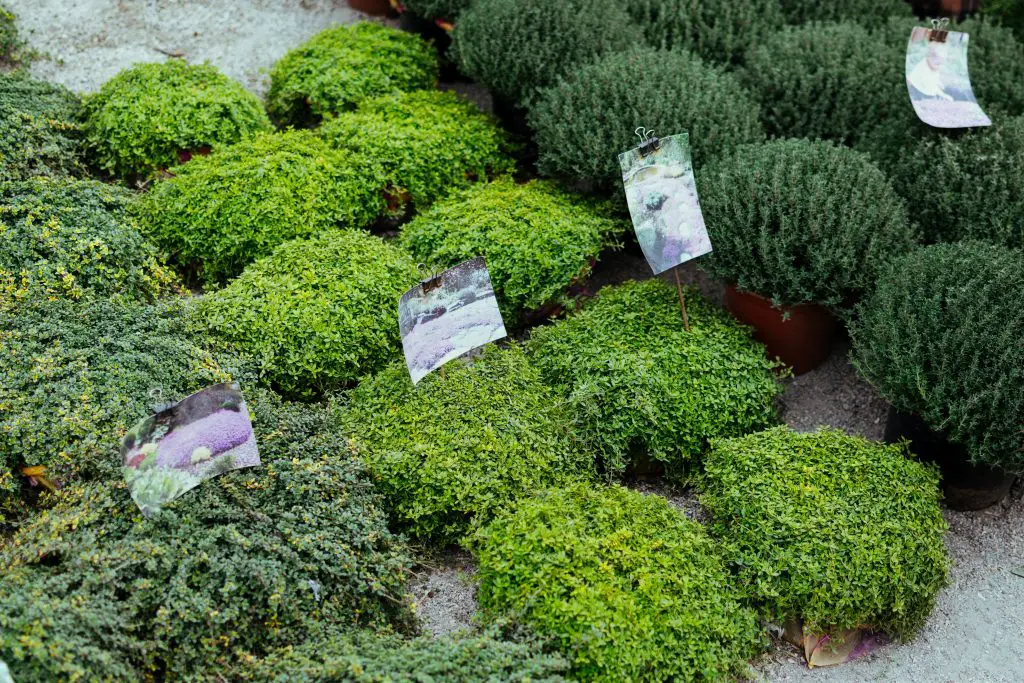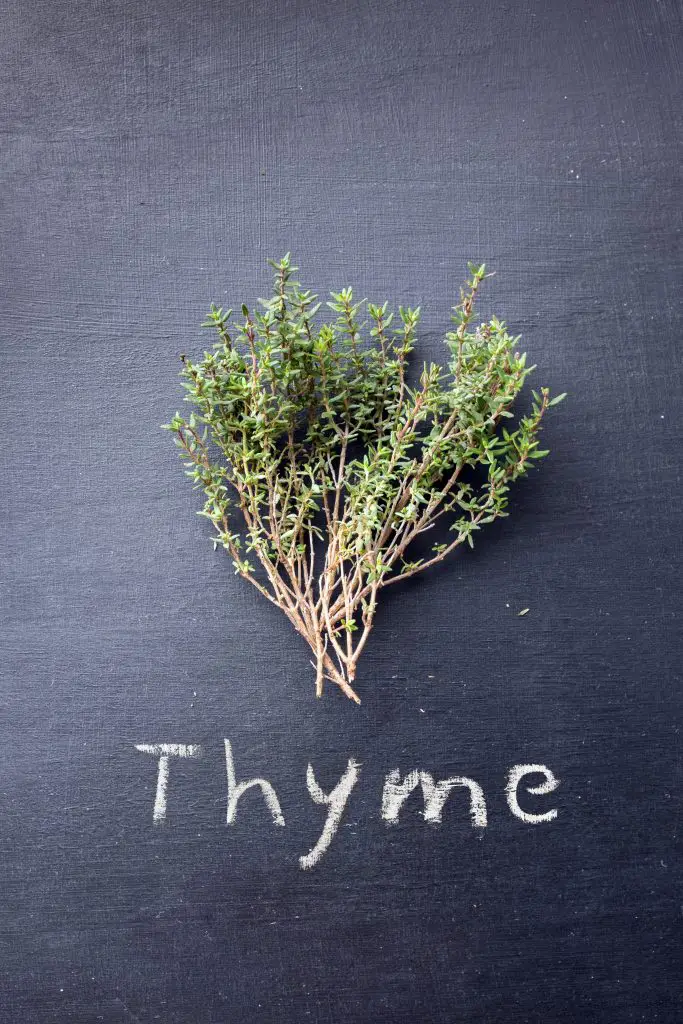Creeping Thyme is one of the best choices when you want a plant carpet in your garden. Creeping Thyme is easy to care for, very robust, and makes a beautiful flowering plant carpet. Creeping Thyme is a perennial plant meaning it will grow back every year.
Creeping Thyme
Creeping Thyme is a variant of Thyme that tends to grow closer to the floor but needs just as little care and is just as robust as regular Thyme.


Sunlight
Full Sun.

When to Plant
In March, April, or May.

Temperature
The ground temperature should be above 70°F.

Soil
Sandy, humus-rich soil that drains well.

Soil PH
between 5.5 and 7.0.

Planting
Can be grown from cuttings, seeds, or established plants.

Pruning
Prune old and woody twigs once a year in autumn.

Watering
Water every 14 days about 1 inch deep.

Pests
Very resistant against almost all pests and diseases.
How to Grow Creeping Thyme
Creeping Thyme is a perfect ground cover for most gardens.
Creeping Thyme needs little to no care and it can survive the winter without any preparations as soon as the plant is established.
Creeping Thyme will never get any taller than 3 inches (7.5 cm). Which makes it perfect as a ground cover.
It is easy to grow but there are still a few things that you need to be careful about!
Preparing the Soil for Planting Creeping Thyme
Creeping thyme, just like regular Thyme, loves dry sandy soil. So use a well-draining loamy or sandy soil for planting Creeping thyme.
You can grow Creeping Thyme inside in a pot but I would highly recommend growing it outside as it is best used as a living carpet or for decoration purposes.
Make sure that the soil is either dry or damp before planting Thyme in it. This is just to ensure that the plant’s roots don´t get too wet during the planting process.
You can spread the soil in a sunny spot to dry it a little, if it is too wet, before using it to plant the Creeping Thyme.
The most important thing to keep in mind is that Creeping Thyme doesn´t like it when the soil is constantly wet. Thyme is used to hot and dry weather so make sure that water has a way to drain from the soil.
This can either be done by layering a few rocks under the soil where you plan to plant the Thyme or by loosening up the soil as well as possible before proceeding to plant the Thyme.
Planting Creeping Thyme

Creeping Thyme can be grown from cuttings or seeds but it can be hard to grow Creeping Thyme from seeds so I generally recommend buying an already established plant from your local Garden Center.
You can plant some thyme seeds in pots and grow small Creeping Thyme plants inside yourself before you plant them in your garden but I recommend growing about twice as many plants as you actually need because chances are that most of the seeds won´t grow into healthy small plants.
You can do the same with cuttings instead of seeds.
It usually takes anywhere between 20 to 30 days for the Creeping Thyme seeds to propagate.
Simply plant the thyme in the right soil and water it thoroughly. Then leave the plants for about 10 days before watering them again.
It is important that you plant Creeping Thyme in a sunny and dry spot.
How to Care for Creeping Thyme

Creeping Thyme doesn´t need a lot of care. You could leave your Creeping Thyme to its own devices and it would grow just fine.
That being said I would still recommend pruning it at least once a year and you should water it if it hasn’t rained in the past two weeks.
How to Prune Creeping Thyme
While it isn´t necessary to prune Creeping Thyme I still recommend pruning the plant once a year before the Winter.
Pruning Thyme is relatively easy. Simply prune all the old and dead twigs and then cut back the younger stems until the plant is about 1/3 shorter than before.
While you want to prune the flowers of regular Thyme before they bloom to make sure that the Thyme doesn´t go bitter, you don´t have to do that with Creeping Thyme unless you plan on eating it.
Watering Creeping Thyme
Thyme in general doesn´t need a lot of water. It is more than enough to water your Creeping Thyme every two weeks when it hasn’t rained.
But even if you don´t water Creeping Thyme for a month and it hasn’t rained then the plant will still survive pretty easily.
As I said before in this article, Creeping Thyme is a very robust plant that doesn´t die easily and doesn´t need a lot of care.
Pests and Diseases
You really don´t have to worry about any pests or diseases with Thyme in general.
Creeping Thyme won´t get any pests that could harm the plant or your garden and the only disease that the plant may catch is root rot which can easily be avoided.
To keep your Thyme from getting any root rot simply keep its “feet” dry. So ensure that any access water can properly drain from the soil and don´t water your Thyme too often.
If you keep the roots of your thyme relatively dry then it won´t get any root rot or fungi.
How to Harvest Creeping Thyme

While Creeping Thyme isn´t really meant to be harvested it is still possible if you want to.
Harvesting Thyme is pretty straightforward. Simply plug some young twigs with green on them and use them in your dish.
You can eat the stems with the green so make sure that you don´t plug any big and woody twigs.
Also, make sure to only harvest Thyme before it is flowering or the taste will be slightly bitter.
Also important to mention is that you should never eat the flowers or flower bulbs of the Creeping Thyme.
How to Store Creeping Thyme Properly
You can read a more detailed guide on how to properly store Thyme right here but generally, you can either dry or freeze thyme in order to store it.
Freezing will make the herb taste a bit less so I generally recommend drying it.
To dry thyme simply plug a few young twigs, bind them in a little herb bundle and then hang them in a dry and warm place.
Leave the Thyme there for about a month until it is completely dry.
Or simply freeze a couple of Creeping Thyme twigs by putting them in a plastic container or plastic bag and put them in the freezer.
Is Creeping Thyme Edible?
I already mentioned that you can harvest and eat Creeping Thyme but is it better or at least as good as regular Thyme?
As a whole, Creeping Thyme is edible but it is mostly used as an ornamental plant for living carpets in gardens. It tastes almost as good as regular Thyme but the stems tend to be smaller and It is a bit more tedious to harvest and prune it.
I personally don´t harvest my Creeping Thyme because I have a few well-established Thyme plants in my garden but if you only have Creeping Thyme in your garden then you could easily just harvest and use that for your dishes.
Does Creeping Thyme Become Invasive?
You might have heard that Creeping Thyme tends to be invasive and quickly spreads all over your garden if you are not careful. And that is partially true.
As a whole, Creeping Thyme can become invasive if it is not contained or pruned properly. The best way to keep Creeping Thyme under control is planting it in an area that is surrounded by stone or wood, such as a garden bed, to keep it from spreading.
You should prune your creeping thyme if it gets outside of where you want to have it. You can also remove whole plants if they get to close to the edge where you want them to grow.
The easiest way to control them, however, is to surround them with either wood, stone, or concrete to keep the plant from spreading any further than the flower bed they are in.
How Quickly Does Creeping Thyme Spread?
Creeping Thyme can spread surprisingly fast which is why it is so important to keep it in check.
Generally, Creeping Thyme can spread very fast if it is not kept under control. An area of 6 square feet can be overgrown within two years when starting from 6 equally spread plants.
Creeping Thyme will generally not spread very much in the first year but as soon as the plant is established it will start spreading fairly quickly.
I had a 6 square inch garden bed where I planted 6 equally spread Creeping Thyme plants in and the second year after planting them they started spreading really fast.
At the end of the second year, the whole bed was pretty much covered in creeping thyme.
Is Creeping Thyme the Same as Thyme?
This is an interesting question that I get asked a lot and I get the confusion. Both plants look extremely similar and tend to grow in pretty much the exact same conditions.
As a general rule, Creeping Thyme is not the same as Thyme. Creeping Thyme only grows to a height of around 4 inches while regular Thyme can get almost six times as high. Creeping Thyme also spreads much faster than Thyme. Apart from that, both plants are very similar.
Will Creeping Thyme Survive the Winter?
Thyme is a plant that usually grows in pretty warm regions but it is also very hardy.
As a whole, Creeping Thyme can survive the winter without much or any preparations needed. It is an evergreen plant so it will keep its leaves in the winter. It is only important to keep the soil that the thyme is growing in as dry as possible during the winter to avoid root rot.
I personally don´t do anything to prepare my Thyme plants for the winter. They can survive the winter on their own pretty well.
The only thing I usually do in autumn is pruning them but even if you don´t prune them they will still survive just fine.
